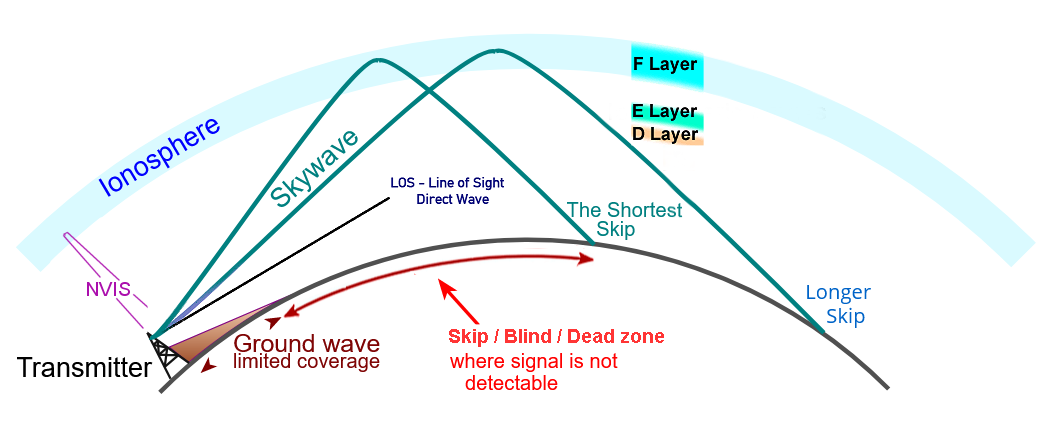
 HF Propagation Modes
HF Propagation Modes
|
HF (3—30 MHz) radio waves can travel in a variety of modes between two ground-based transceivers. Skywaves are the most useful because they provide the longest range possible. The higher the refracting region, the greater the range for a given angle of incidence. There are three main modes of HF Radio Propagation:1. Line of Sight (LOS) ↗ propagation occurs when stations are directly visible to each other.
Usually, Line of Sight signals would propagate directly between transmitter and receiver, but there could be complex refractions (by conductive surfaces) See for example: ElectronicsNotes, Kogelnik, Wiki. Ground wave: Surface propagation occurs when signals follow the contour of the Earth, over hills and beyond the horizon. It is most effective over salty sea water or good conductive ground (vertical polarization only). The effective distance of ground waves drops significantly above 2 Mhz. Skywave is the mode of propagation in which the radio signal is refracted by the ionosphere and returns to Earth. It is most effective at frequencies beween 3 and 30 MHz and can be used for long-range communication. HF radio waves are generally refracted by the ionospheric regions E, F1, and F2, and are only rarely bounced by Aurora and/or Meteor Scatter. There are sometimes ducting effects as illustrated here. Read more about Modes of HF Propagation the main page. The project "Understanding HF Propagation" focuses on near-real-time indicators and explains what they mean.
|
